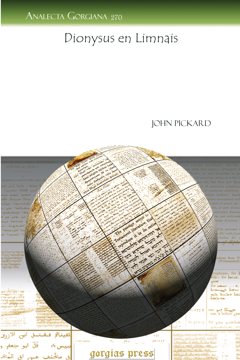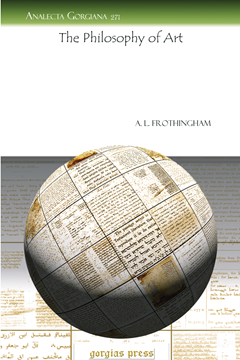Notes on Roman Artists of the Middle Ages
Series: Analecta Gorgiana 264
ISBN: 978-1-60724-493-6
In this series, A. J. Frothingham Jr. reviews previously unstudied papal buildings, suggesting new members of the schools of Laurentius and Paulus and linking specific artists to various buildings.
$40.00 (USD) $24.00 (USD)
Excavations by the American School at the Theatre of Sikyon.
Series: Analecta Gorgiana 265
ISBN: 978-1-60724-494-3
McMurtry's original site report on the excavation of the Theater of Sikyon near Corinth. Sikyon (or Sicyon) boasts a well preserved Greek theater whose excavation illuminates the structures which supported Greek drama.
$40.00 (USD) $24.00 (USD)
Discoveries at Plataia in 1889
Series: Analecta Gorgiana 266
ISBN: 978-1-60724-495-0
Plataia (Plataea) is one of the key sites for Historians, Classicists, and Archaeologists with interest in Greek antiquity. This is the original site report for Plataia (Platea), including an edict of Diocletian, inscriptions, and description of the battlefield.
$37.00 (USD) $22.20 (USD)
Introduction of Gothic Architecture into Italy by the French Cistercian Monks.
Series: Analecta Gorgiana 267
ISBN: 978-1-60724-496-7
This series of papers shows that a group of monuments erected by the French Cistercian monks, and here for the first time fully described and illustrated, were the earliest Italian buildings using transitional-Gothic architecture.
$47.00 (USD) $28.20 (USD)
The Topography of Sparta
Series: Analecta Gorgiana 268
ISBN: 978-1-60724-497-4
This paper attempts to reconcile Pausanias' description of the topography of Sparta with the first archeological digs in Sparta, a notoriously difficult site to interpret.
$39.00 (USD) $23.40 (USD)
A History of the Akropolis of Athens
Series: Analecta Gorgiana 269
ISBN: 978-1-60724-498-1
This paper presents a thorough review of the physical remains and excavation history of the Athenian Acropolis from the Bronze Age to the early 20th Century.
$50.00 (USD) $30.00 (USD)
Dionysus en Limnais
By John Pickard
Series: Analecta Gorgiana 270
ISBN: 978-1-60724-499-8
This paper discusses the literary and physical evidence for the Lenaeum (the sacred precinct of Dionysios in Athens), a site whose location was lost.
$36.00 (USD) $21.60 (USD)
The Philosophy of Art
Series: Analecta Gorgiana 271
ISBN: 978-1-60724-500-1
A. L. Frothingham, one of the founding fathers of Art History as a discipline, answers the question “What is Art?”
$38.00 (USD) $22.80 (USD)
The Madonnas of Luca Della Robbia
Series: Analecta Gorgiana 272
ISBN: 978-1-60724-501-8
Luca della Robbia was a Florentine sculptor who is currently thought to have lived from 1400-1482. In this article Alan Marquand suggests a chronology for the Madonnas sculpted by Luca della Robbia.
$37.00 (USD) $22.20 (USD)
On the Distinctio Versuum in the Manuscripts of Terence
Series: Analecta Gorgiana 273
ISBN: 978-1-60724-502-5
Minton Warren illuminates the process by which he and other editors navigate the very difficult task of editing the plays of Terrence from manuscript to edition.
$37.00 (USD) $22.20 (USD)









